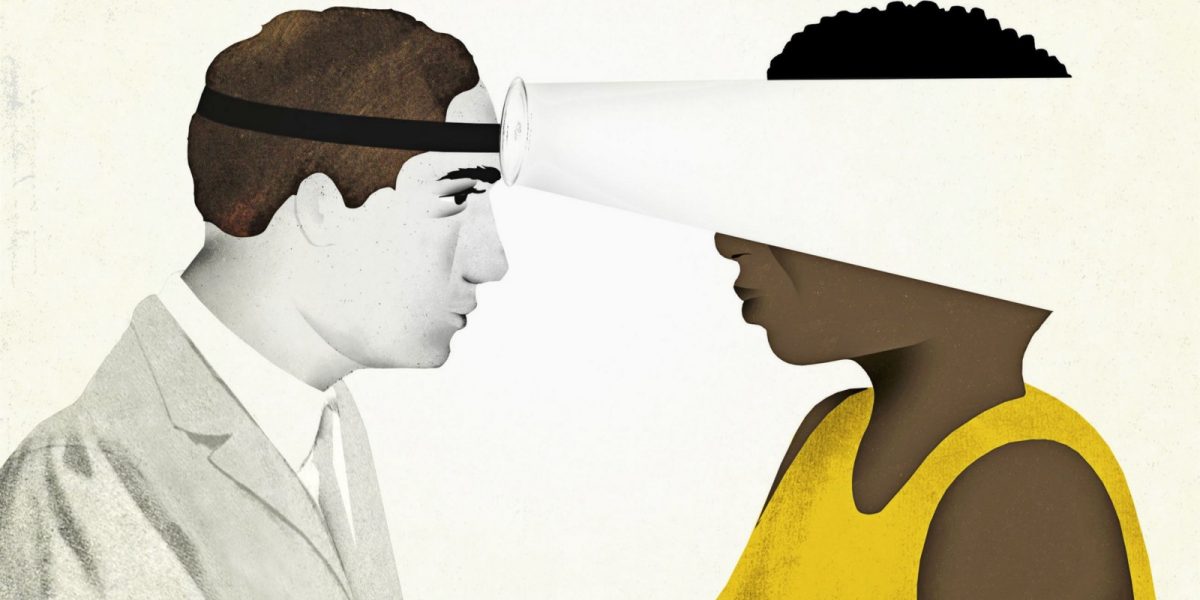Personal and systemic biases prevent health equity
Becoming a doctor is an extremely long and tiresome process. Four years of pre-med education, four years of medical school, at least three years of residency, not to mention additional years of residency if one wants to specialize. Throughout these years of education and practice, an aspiring physician learns all the science they need to become a proficient medical practitioner; unfortunately, they also acquire all the biases and prejudices to perpetuate the issues that lead to health inequities and substandard medical treatment for minority populations. No one is explicitly being taught to ignore the needs of patients simply because they are of a different ethnic background, but an unconscious and implicit bias begins to form during the medical training process, thus leading to a failure to achieve health equity in America.
Implicit Bias
According to Patricia Devine (1989) implicit biases develop early in life, and those implicit biases are just reinforced throughout a person’s lifetime. There’s actually a test called the Implicit Association Test (IAT) that was developed in 1998 to measure bias. The IAT asks the test taker to sort pictures of black and white people and words like “good” or “bad” into pairs. This test has been taken over 4 million times between 2002 and 2017, and about 75% of people have preferred an automatic white preference, showing that bias is built in childhood (Harvard et. al, 2017). Unfortunately, this implicit bias does not escape the medical field.
Systemic Bias
Perhaps no medical specialty exemplifies this practice more than the study of dermatology, one of the least racially diverse specialties. Race-discordant dermatology visits very often lack individualized and specific knowledge of Black patients’ skin, hair, and hair regimes, because traditionally the field of dermatology is taught from the perspective of a white patient (Wilson et. al, 2021). While it is true that medical school training is intensive and often lacks time for nuance, this lack of diversity when it comes to patient care is unintentionally creating bias in their students.
Not only is the issue of implicit bias present in medical training, it is perpetuated by medical school admissions committees. Instead of serving as a crucial gatekeeper to address and to an extent, correct, the significant disparity between racial and ethnic minorities in healthcare, a study conducted by Jasmine R. Marcelin, along with several editors, showed that members of a medical school admissions committee displayed a large unconscious bias towards people of a caucasion background, which leads to more white doctors in medical field and thus the cycle continues as a white doctor won’t have any stereotypes or prejudice towards a white patient, but will unconsciously have a negative bias towards a black one, and race isn’t the only bias in the medical field. There are plenty of biases like gender, sexual, disability, etc.
The (Un)Intended Conseqences
What are the effects of these biases? Well, certain groups of people are not getting the care that they want or need because physicians have been educated in a manner that has created an unconscious stream of thought that makes them biased, in a negative way, towards their patients. There have been studies that show unconscious biases affect clinical judgment and the behavior of the physicians and nurses towards the patients. For example – revisiting our dermatology example – several studies show that more than 70% of Black patients prefer Black dermatologists. Unfortunately, these doctors only make up only about 3% of the entire field of dermatologists. Therefore, the majority of Black patients are forced to visit non-Black dermatologists. Race-discordant dermatology visits very often lack individualized and specific knowledge of their Black patient’s skin, hair, hair regimes, etc, thus causing a negative perception of the non-Black physician, and more troubling, a substandard experience for the Black patient (Wilson et. al, 2021).
Mitigating Damages
So how can these implicit biases be mitigated? The first and most obvious is to increase diversity in medical programs across the country. As mentioned previously, medical school admissions committees display an unconscious bias towards a caucasion background, and this impedes diversity. The more doctors of different ethnic groups there are, the less stereotype and bias there will be towards patients. An asian doctor won’t have stereotypes towards asian patients, while a white doctor might as they have generated biases – implicitly or explicitly – throughout their childhood, med school, and career.
Another way to mitigate these biases is to self-reflect on biases in one’s culture, and how they affect you and how other ways view or treat you accordingly. Looking upon yourself before judging others is one of the oldest teachings, so why can’t it be used to mitigate biases in healthcare? Doing so may help physicians understand how patients of their similar ethnic backgrounds are treated.
Additionally, to help resolve these biases, colleges and residency programs should create diversity in their admissions board with people from all different ethnic backgrounds and genders, so that patients that are treated in the future get the best care required. A Black doctor is just as good as a white one, and a female doctor is just as good as a male one. By having a diverse board, healthcare can get a wide variety of medical practitioners, soon putting an end to these implicit and unconscious biases. This issue won’t repair itself overnight, but doing these things is certainly a start.
Works Cited
Devine, P. G. (1989). Stereotypes and prejudice: Their automatic and controlled components. Journal of Personality and Social Psychology, 56(1), 5–18.https://doi.apa.org/doiLanding?doi=10.1037%2F0022-3514.56.1.5
Chapman, E. N., Kaatz, A., & Carnes, M. (2013). Physicians and implicit bias: how doctors may unwittingly perpetuate health care disparities. Journal of general internal medicine, 28(11), 1504–1510.https://www.ncbi.nlm.nih.gov/pmc/articles/PMC3797360/
Devine, P.G., (2012). Reactions to Vanguards: Advances in Backlash Theory. Advances in Experimental Social Psychology, 56(1), 170. https://books.google.com/books?hl=en&lr=&id=xPCQM6g7CQ0C&oi=fnd&pg=PP1&ots=XLL05WRfIH&sig=YoSHXgRTr1CBw_Sv5cfVifzGlbI#v=onepage&q&f=false
Marcelin, Jasmine R., (2019). Supporting Inclusion, Diversity, Access, and Equity in the Infectious Disease Workforce. The Journal of Infectious Diseases, 220(2), S50–S61 https://academic.oup.com/jid/article/220/Supplement_2/S50/5552354
Wilson, B. N., Murase, J. E., Sliwka, D., & Botto, N. (2021). Bridging racial differences in the clinical encounter: How implicit bias and stereotype threat contribute to health care disparities in the dermatology clinic. International journal of women’s dermatology, 7(2), 139–144.https://www.ncbi.nlm.nih.gov/pmc/articles/PMC8072500/





